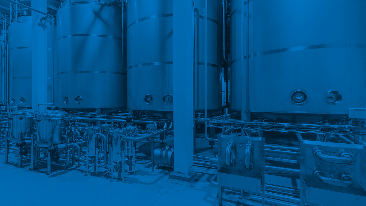In speaking with customers about their supply chain objectives, several themes consistently come up in conversation. Here are some of their top priorities – and insight on how to effectively address each of these concerns.
Improving Cashflow
A lot more companies are talking to their employees and investors about their goal of improving operating cashflow, in conjunction with profitability. Supply chain initiatives such as implementing or revamping sales and operations planning (S&OP) or integrated business planning (IBP) processes can help cashflow. I have also observed increasing customer awareness of a tremendous unrealized cashflow improvement opportunity: improving their sales and operations execution (S&OE) processes and capabilities.
Having the ability and tools to continuously align demand, supply, capacity and operations execution every day is a game-changer for most companies. In a recent webinar, one of our customers spoke about how AspenTech solutions help them optimize their supply chain on a daily basis. They indicated that inventories at multiple manufacturing sites dropped by 25% while simultaneously improving on-time and in-full (OTIF) supply chain performance KPIs.
Improving Forecast Accuracy
Companies continue to look for ways to better predict demand patterns. Artificial intelligence holds a lot of promise to improve forecast accuracy and there is a lot of on-going research in this area. Another innovative yet rarely used approach that numerous AspenTech supply chain customers find valuable is something we call demand patterns segmentation. We have successfully applied this approach in different industries, predicting demand for different types of fuels or oil products, demand for bulk and specialty chemicals, as well as demand for numerous types of consumer packaged goods. Employing such methods greatly helps demand planners focus their limited time and attention on what matters most.
Improving Supply Chain Execution Capabilities
In recent years, most companies have been working hard to improve the maturity of their S&OP and IBP planning processes. But as every company knows, plans don’t always go as planned. Supply and demand uncertainty bring forth daily events and issues that must be managed. Plans become outdated quickly. To address this, I have observed more companies that are attempting to run their planning digital twins (models) more frequently. Of key importance in all of this is the fidelity or resolution of the supply chain model. More and more companies are realizing that higher fidelity supply chain S&OE models, which complement S&OP/IBP models, are essential to effectively improving supply chain execution.
One of our customers illustrates this trend as they roll out AspenTech supply chain solutions to their global sites. Over the course of the implementation at one business unit, their ability to reliably promise orders to their customers rocketed from the mid 40% KPI range to a previously unseen 95% KPI in less than a year.
Finding “Hidden Factories” Inside Your Factories: The Productivity Imperative
Many years ago, I would predominantly hear customers speak about their desire to “accomplish the same outcomes with less resources” - efficiency. Now the narrative has changed to wanting to “accomplish more with same resources” – productivity. The shift is a subtle but important one. It indicates to me a shift towards a growth mindset and recognition that supply chain management can accomplish more than just costs savings; it can support a company’s business growth agenda.
These companies are interested in productivity gains in teams (people) and assets in their supply chain network (facilities, resources, equipment). More companies are becoming aware of the significant opportunity associated with efficient production scheduling and stock-transfer optimization scheduling. It is a way of tapping into the “hidden factory” (capacity) within their factories. It’s a way of delaying or avoiding significant capital expenditures related to purchasing additional machines, tanks, etc.
I recently heard a great customer success story from one of our supply chain solutions implementation partners that illustrates this point. Their customer, a consumer packaged goods producer, went from running seven days of manufacturing operations to only needing to run five days a week as a result of efficient scheduling. Not only did they realize costs savings, but they’ve discovered this hidden capacity that they can now use to further grow their business.
The Self-Healing Supply Chain
Many customers are becoming increasingly interested in this idea of a self-healing supply chain. In a recent Forbes article, Steve Banker of ARC Advisory Group stated, “The term “self-healing supply chain” is beginning to be used. This term reflects the idea that parameters should automatically update. It also includes the idea that the best plan is useless if unexpected events occur. It is important not just to create an optimum plan, but to be able to replan using a robust control tower as needed. A self-healing supply chain is impossible without a robust supply chain digital twin.”
It’s a source of pride that AspenTech is the first and only supply chain solutions provider to date to offer both self-healing supply chain capabilities. Through synergies between our supply chain and manufacturing execution systems (MES) solutions, we are able to quickly surface inaccurate information within the master data that makes up the foundation of planning and scheduling models.
Similarly, through synergies between our supply chain and asset performance management (APM) solutions, we can employ low-touch machine learning (ML) to predict equipment/asset failures and then use prescriptive mathematical optimization (MO) methods in supply chain planning and scheduling digital twins to answer the question “When should we take planned downtime (in advance of the predicted failure event) to ensure minimal disruptions, costs and impact to customer order commitments and relationships?”
Learn more in the recent white paper “Alignment Between Supply Chain and Operations Execution: The Formula for Higher Profits in Chemicals.”






Leave A Comment